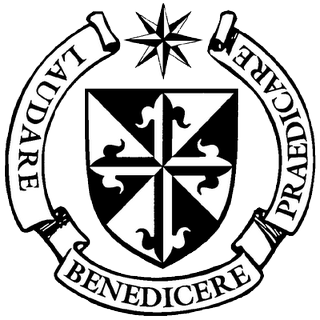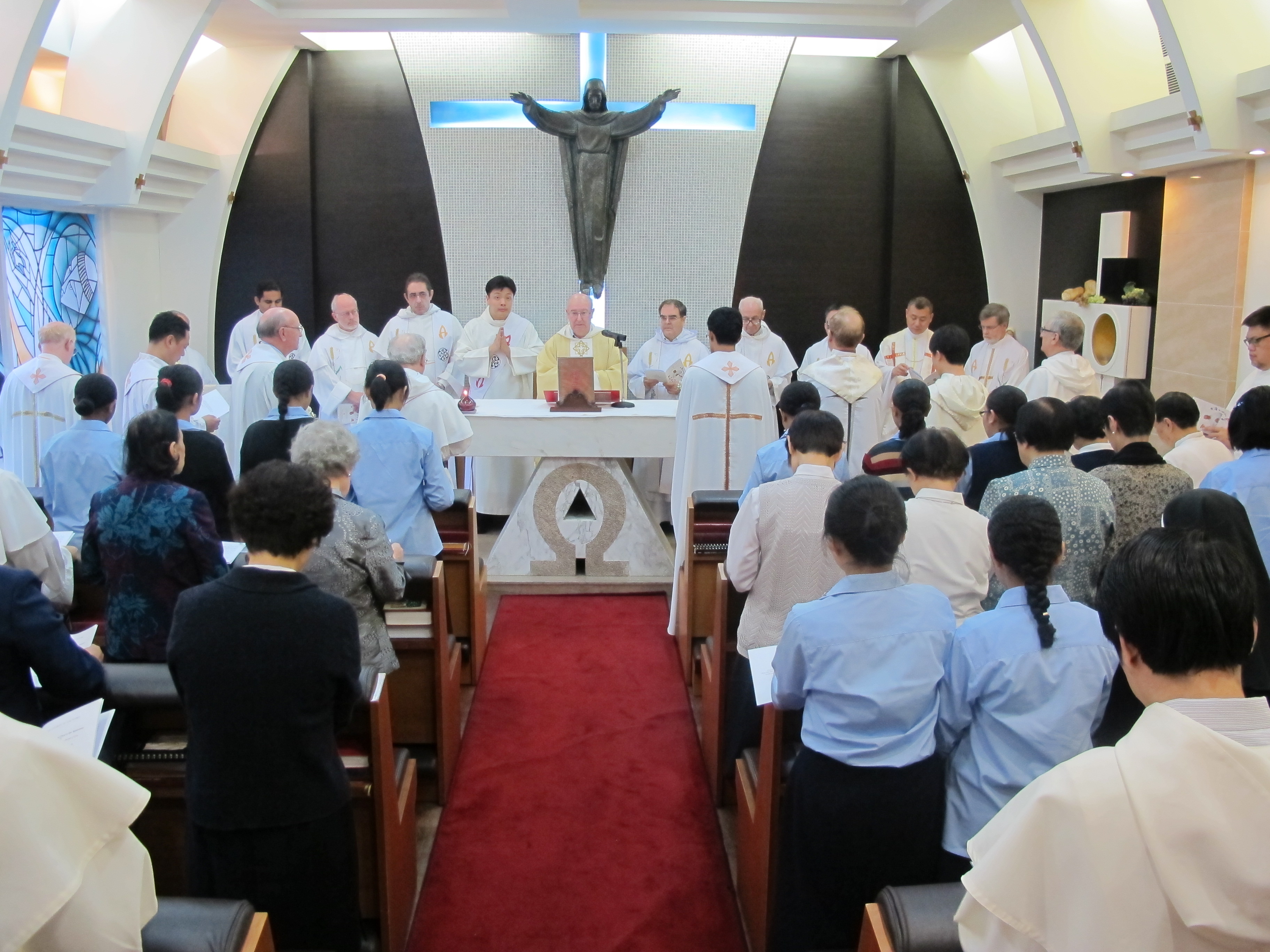
On May 11, 2013, Our Priory of St. Dominic honored one of its members on his Golden Jubilee as a Dominican Priest. The joyful celebration began with a solemn Mass and continued with a fraternal agape in a Macau restaurant.
The Eucharistic celebration took place in our chapel in the evening and was also attended by Dominican brothers from our communities in Hong Kong and the Dominican sisters Missionaries of the Rosary and their postulants. Presided by Fr. Jose Luis de Miguel, OP, our dear Golden Jubilarian as a Dominican priest, the Holy Mass was concelebrated by about twenty priests, most of them our Dominican brothers, and animated with appropriate songs and hymns by our student brothers and the postulants of the Dominican sisters. A few lay friends of the community accompanied us. In his moving homily, Fr. Jose Luis voiced his boundless gratitude to God for the unmerited gift of vocation.
During the banquet with exquisite Chinese food, which followed the religious celebration, our students with the Dominican sisters and their postulants presented an entertaining program of songs. Our Fr. Provincial Javier Gonzalez, OP, congratulated Fr. Jose Luis for this great milestone and thanked him for his continuing apostolic work in our Dominican Province of Our Lady of the Rosary. Likewise our Bishop of Macau, the Most Rev. Joseph Lai, DD, thanked the Golden Jubilarian and the Dominicans for their appreciated work in his Diocese. The thanksgiving was concluded with the simple and heart-felt gratitude of the honoree.
The celebration continued the next day, May 12, Ascension Sunday and Mothers’ Day, which happened to be this year the birthdate of Fr. Jose Luis. The Eucharistic celebration, attended by our friends and faithful participants in our Sunday masses, was followed by a simple lunch for all.
Fr. Jose Luis, congratulations, more years to your life in our community, and … the journey continues!
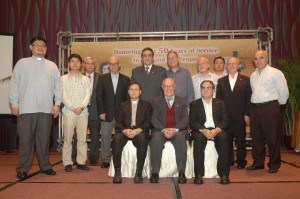

On April 21, 2013 the Fourth Sunday of Easter, Good Shepherd Sunday, the Diocese of Macau honored priests and religious men and women who celebrate their respective anniversary: the Diamond, Golden or Silver Jubilee. The highlight of this especial celebration was the Solemn Mass presided by the Bishop of the Diocese, the Most Rev. Joseph Lai, DD, and concelebrated by thirty secular and religious priests. The Rite of Recognition and Gratitude, held after Communion, was led by the officers of the Serra Club of Macau that sponsored and organized the whole celebration. After the Holy Mass, the participants were invited to a simple and joyful agape.
This year the number of Jubilarians was sixteen: four priests Golden Jubilarians and twelve religious women – three Diamond, five Golden and four Silver Jubilarians. The priests as well as religious sisters came from different countries to work for the Kingdom of God in Macau. One of four priests is our own Fr. Jose Luis de Miguel, OP.
In his homily Bishop Lai underlined the significance of the Good Shepherd Sunday, which is the Vocation Sunday in the whole Church. He invited all the faithful that filled the Cathedral of Macau to pray for vocations to the priesthood and the religious life. He also remembered the victims of the recent earthquake in the Sichuan Province, China, of the Boston Marathon Bombings and the Fertilizer Plant explosion in West, Texas.
During the Rite of Recognition of and Gratitude to the honorees, the jubilarians received some tokens, including a cross and a diploma. The best and most appreciated gift was the enthusiastic and grateful applause of all the faithful, the laity, religious men and women and our Dominican students.
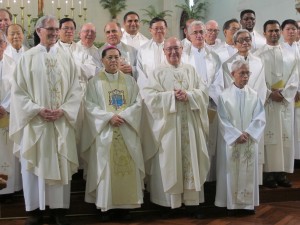
The Serra Club of Macau took care of all the details of the very successful and joyful celebration. The Serra Club is an association of Catholic lay men and women dedicated to foster and promote vocations to the priesthood, the religious life and to the lay ministry. There are about 670 Serra Clubs throughout the world. Its name refers to Blessed JunÃpero Serra, the great Franciscan missionary.
Our warmest and fraternal congratulations to all the jubilarians, our brothers and sisters in Christ! Our sincere gratitude to the Diocese of Macau and to the Serra Club!
Fr. José Luis, our dear Golden Jubilarian was ordained in Valladolid, Spain on June 30, 1963. He joined our Priory in January, 2012. He is the Moderator of our Center of Institutional Studies and the Assistant Master of Students. Our Macau Dominican community will celebrate Fr. Jose Luis’ momentous event on May 11, 2013 with a Solemn Mass in our Priory and a formal dinner in a Macau restaurant. By the way the classmates – all golden jubilarians – of Fr. Jose Luis are eleven Dominicans, including our dear Fr. Lucio Gutierrez, OP. who lived in our community for two years and is now confined at the St. Martin de Porres Hospital in Manila.

Dear Brothers,
Easter brings us hope of a new beginning. May your life be full of joy and a fresh new start.
Wish you a very happy Easter.
Fr. Alejandro Salcedo
Prior
Saint Dominic’s Pripry
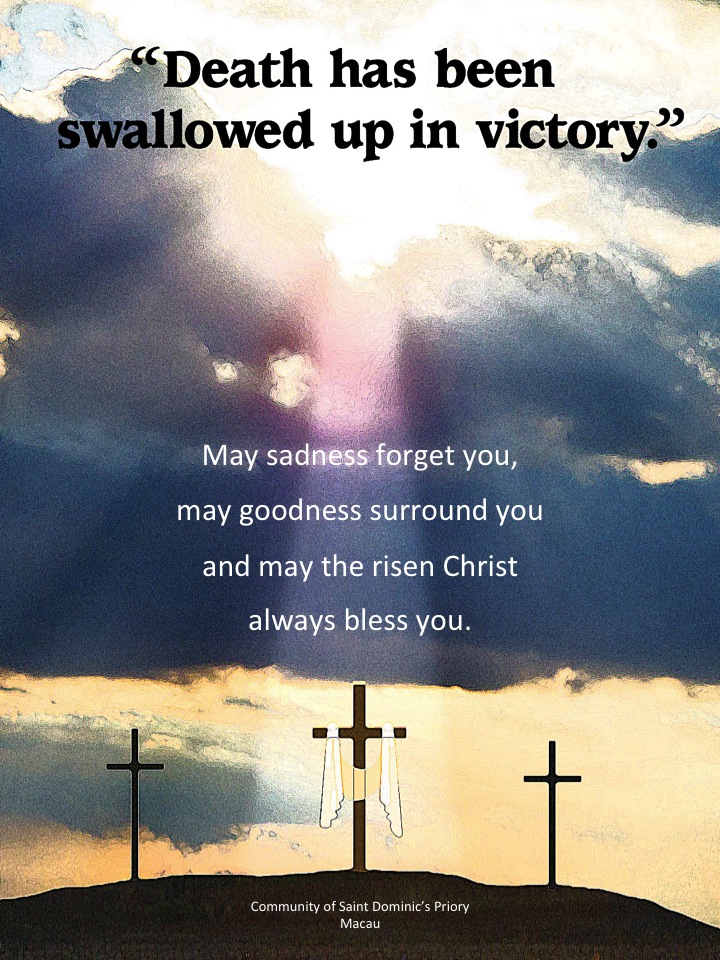

On March 10, 2013, Brother Sebastian Lee Skang Hoon, O. P., made his Solemn Profession within the Mass of the Fourth Sunday of Lent at our St Dominic’s Priory in Macau. Bro. Sebastian is from Korea.
The main celebrant of the Eucharist was Fr. Javier Gonzalez, O. P., Prior Provincial of the Province of Our Lady of the Rosary. Ten Dominicans and two secular priests concelebrated with Fr. Javier. The Chapel was fully packed. The faithful were members of the the Korean Community in Macau, the participants in our Sunday Masses, our Dominican Brothers and Sisters including the postulants, and friends of Bro. Sebastian and of our Priory.
Bro. Sebastian made his Solemn Profession for life before Fr. Javier, promising obedience to the Master of the Order, Fr. Bruno Cadoré, O. P. It was a joyful celebration animated by meaningful songs and prayers led by our Dominican brothers and Sisters.
The Province of the Holy Rosary rejoices! Little by little and consistently the number of brothers getting ready to be missionaries is growing. This month of March 2013, the Province rejoices also for the Solemn Profession of our Brother Paul, member of St. Albert Convent in Rosaryhill, Hong Kong; for the Ordination to the Deaconate of our brothers Philip Soreh and John Bosco, members of the House of the Most Holy Trinity in Rome, and Brother Juan Franco Pérez, O. P., member of the House of St. John Macias in Cáceres, Spain.
For so many blessings – and more to come -, thanks be to God!
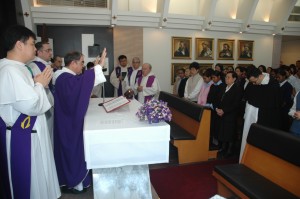
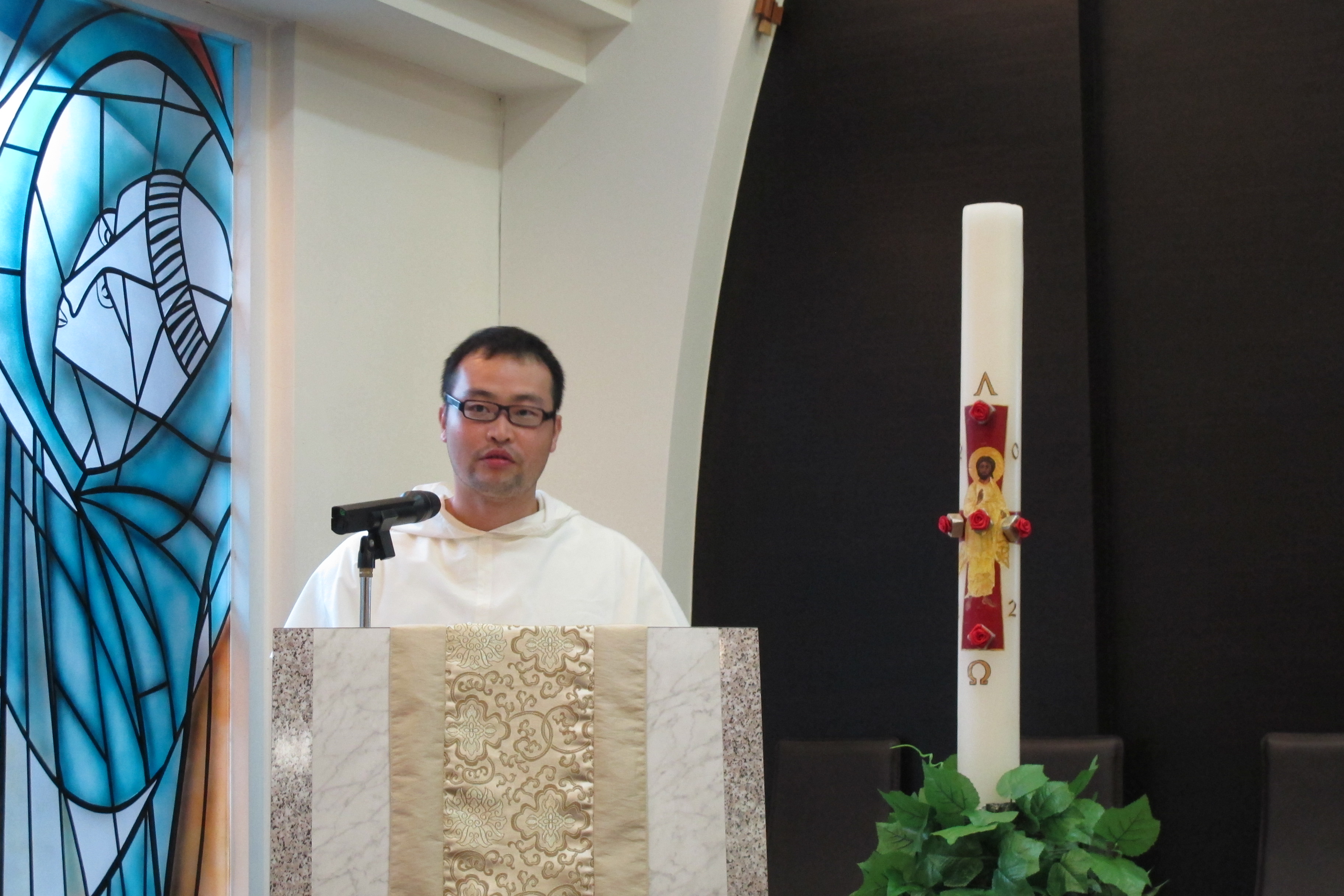
The Prior Provincial Rev. Fr. Javier González Izquierdo OP and the brethren of the Dominican Province of Our Lady of the Rosary request the honor of your presence to share with us this joyous occasion when our brother Sebastiano Lee Sanghoon OP will make his solemn profession as a friar preacher.
The profession will be held during the conventual Mass at Saint Dominic’s Priory, 39-41 Avenida Sidonio de Pais, Macau
on 10 March, 2013 Sunday at 11:00 in the morning.
A fraternal agape will follow after the liturgy

On February 9, 2013, St. Dominic’s Priory said ‘Good bye’ to the old Year of the Dragon with a dinner at home tastefully cooked by our brothers. We had then two special guests and friends of the community: Frs. Peter Stilwell, Rector of the University of St. Joseph and Joao Eleuterio, Dean of the Faculty of Christian Studies of the same university. After the sumptuous dinner, our student brothers went to the city to enjoy the colorfully lighted city of Macau, especially the Casino districts. (In case you do not know, there are at present forty four casinos in Macau)
The Chinese New Year, the Year of the Snake, was welcomed by the Priory with a Solemn Mass and a lunch of tasteful Chinese food. As the first day of the New Year (January 1, 2013) we celebrated the Feast of the Motherhood of Mary, the first day of the Chinese New year (this year February 10, 2013) we commemorated the Feast of Our Lady of China. After communion, a lovely touch: The giving of simple gifts (in red or yellow envelopes, of course!) to our faithful brothers and sisters who attend regularly our Sunday Mass. What was the simple gift? A five-mystery Rosary made by our brothers in China!
After the celebration of the Eucharist, all the members of the community, that is, thirty one (31) shared a good lunch with the usual kinds of Chinese dishes in a Macau restaurant. After the dessert, Fr. Prior Alex distributed the traditional red or yellow envelopes – this time with some money, as custom demands – to each member of the community. By the way, we were thirty, and a few days ago became thirty one: Brother Antoninus from China joined our community to pursue a master’s degree at the Catholic University of St. Joseph. Most welcomed, Brother!
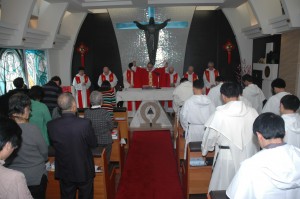
The Chinese families celebrate the New Lunar Year with great solemnity, exemplary harmony and serene joy – and at times with some accompanying fire crackers to keep the bad spirits away. On February 10, 2013, the Year of the Snake began. The Chinese Horoscope assigns the twelve Zodiac sings of the year to different months. The first month is given to the rat, and the last to the pig. The sixth month is the Month of the Snake. The snake in this case is a symbol of wealth, progress, courage and of finding solution to difficult problems. We Christians living in this part of the world add a deeply religious meaning: the year of Our Lady as Our Lady of China. May the Year of the Snake, the Year of Our Lady be for all a hopeful and happy year!

